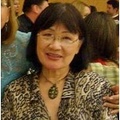Como se ha informado recientemente, Paraguay fue uno de los últimos países de la América del Sur en donde ingresaron los inmigrantes japoneses (1936). Tal vez debido a que Paraguay por su mediterraneidad, era un país sin costas en el mar. La ausencia del mar era una condición negativa para el desarrollo vital de las personas y para cualquier relacionamiento con el exterior como también para las adecuadas transacciones comerciales.
La Colmena fue la primera colonia japonesa del Paraguay, se la consideró como “una isla sin mar”, aislada de otras poblaciones de nacionales. Si bien la tierra era fértil y la configuración geográfica de una belleza increíble, los organizadores de la colonia que era Paraguay Takushoku Kumiai (Compañía Colonizadora del Paraguay) hicieron esfuerzos sobrehumano para dotar a los pobladores un vida saludable y próspera. Con una infraestructura adecuada para la formación de una colonia dentro del área urbana con, escuela, hospital, plaza, club social, área de recreación deportiva, iglesia a través de una planificación del terreno diseñado por el Ingeniero Hisakazu Kasamatsu, así mismo el sector rural con divisiones adecuadas en parcelas de 20 hectáreas para cada familia.
Era los años treinta, en el que la ciudades del interior no contaba con electricidad, ni agua corriente, tampoco los desagues, todo el mecanismo de acción y de trabajo eran manuales. Se prendía luces con lámpara a presión con combustible de kerosén, cavaba pozos para sacar agua a través de una roldana estirada por piolas de yute y un balde de latón, el excusado quedaba a cierta distancia de la casa. Cada hogar japonés plantaba frutales, hortalizas y flores dentro de un espacioso jardín. Compactaba la tierra para el camino interno. Para los que no conocían otro ambiente como ocurría con los niños, esta colonia era un paraíso terrenal en el que ellos se compenetraban con la naturaleza, recorrían los campos de cultivos, bebían, pescaban y se sumergían en el agua cristalina de los arroyos, deleitaban con el canto de los diversos pájaros, caminaban kilómetros en el fresco rocío de la mañana, mientras aspiraban el perfume de las flores silvestres y sus imaginaciones tejían mitos y realidades con tanta facilidad.
Los organizadores de la Colonia habían tratado de ofrecer lo mejor sobre la base de la armonía (wa) teniendo en cuenta que, la naturaleza humana era buena y que el afecto natural emanada entre los miembros de una familia era la base fundamental de la moralidad social. Esta característica de ver la vida se adentró profundamente entre los niños de tal manera que a pesar del tiempo transcurrido, La Colmena había convertido como un refugio o un paraíso del alma y los episodios de una niñez feliz, dentro de una disciplina estricta que no permitía ni una torcedura como la que impartía la maestra de la escuela japonesa, Naka Yazawa. ¿Quien no se recuerda sus sabias enseñanzas de vida y guía para un camino recto?
La vida es, en realidad la complementación de dos fuerzas, la: positivo y el negativo, en japonés se los llama el IN y el YOH que son elementos diferentes y necesarias como el día y la noche, como el hombre y la mujer, el frío y el calor. A este respecto se puede mencionar el aspecto negativo de la vida de la colonia., aun cuando esto no se puede considerar quizás como una complementariedad sino como un episodio de disturbio de la naturaleza que afecto negativamente el desarrollo cabal de la producción y el ánimo de los pobladores. Como el caso de la intensa helada, la invasión de langostas y de los gusanos que fueron verdaderos exterminio de la cosecha y de todas las plantaciones. La falta de acceso de comercialización de los productos a otros mercados como el de la capital fue otro de los aspectos negativos por carecer de transportes y de rutas de acceso y trasportes y falto de apoyo del gobierno japonés. En medio de la desesperación cerca de la mitad de las familias se trasladaron a otros rumbos, algunos a la Argentina, algunos volvieron al Japón, mientras que otros tantos trasladaron a la capital paraguaya y otras ciudades.
Sin embargo, estos aspectos negativos contribuyó a afianzar aún más entre los restantes miembros de la colonia para enfrentar en forma conjunta la lucha por la vida con perseverancia y tenacidad; y este ejemplo dio lugar a que Paraguay abra sus puertas después de la Segunda Guerra Mundial a nuevas inmigraciones japonesas. Como menciona Carlos Kasuga han convertido en abono fértil la tierra para dar nuevos frutos.
Llegado a este punto cual es la incidencia entre los pobladores Nikkei de La Colmena. Y los que nacieron en La Colmena y viven fuera de este distrito. La Colmena sigue siendo una “isla sin mar” en donde el espíritu de los primeros inmigrantes al Paraguay permanecen casi inalterable, aun siendo ya Nikkei, aflora en su comportamiento y su filosofía de vida. Varios estudiosos japoneses quienes visitaron esta colonia comprobaron como algo insólito, la existencia de una cultura y disciplina caracterizada de la era Meiji (1868-1912) enraizada en el alma de los japoneses y Nikkei de La Colmena.
Sus descendientes se dispensaron en todo el Paraguay, pero su sello de diferenciación y quizás podemos llamar de “distinción” se hace notar en varias manifestaciones que a diario exterioriza, con una ética en la conducción de vida, son seres confiables, con disciplina y con la corrección demostrada en varias circunstancias y actividades que les tocaron vivir. Como ocurren a miles de Nikkei de las Americas.
Nuevas esperanzas se asoma con la llegada del nuevo año 2007. Que ese espíritu que de alguna manera heredamos de nuestros ancestros japoneses permanezcan como un símbolo único y vital y en cuya hibridación con las culturas locales sea motivo de muchas realizaciones y nuevas creatividades en la búsqueda de una mejor forma de vida para todos los habitantes de las Americas, y que sea complementaria como el Ying y el Yang.
Feliz Navidad y Año Nuevo, les desea de todo corazón una nisei paraguaya que vive en una isla sin mar pero en el corazón de la América del Sur.
© 2006 Emi Kasamatsu





